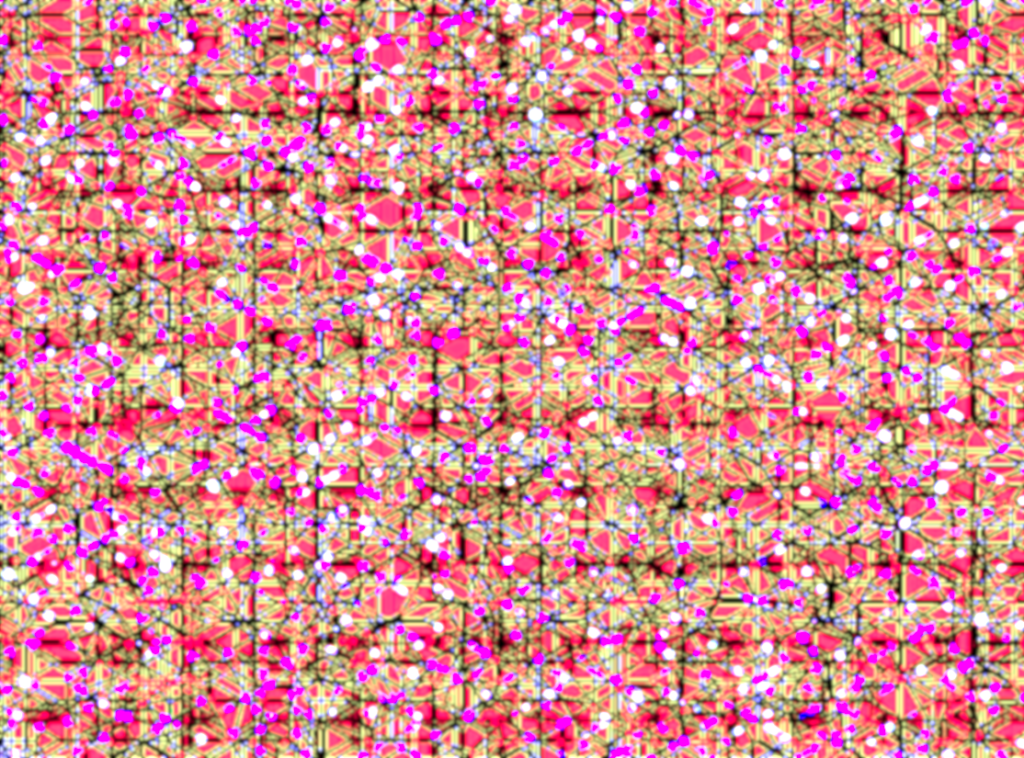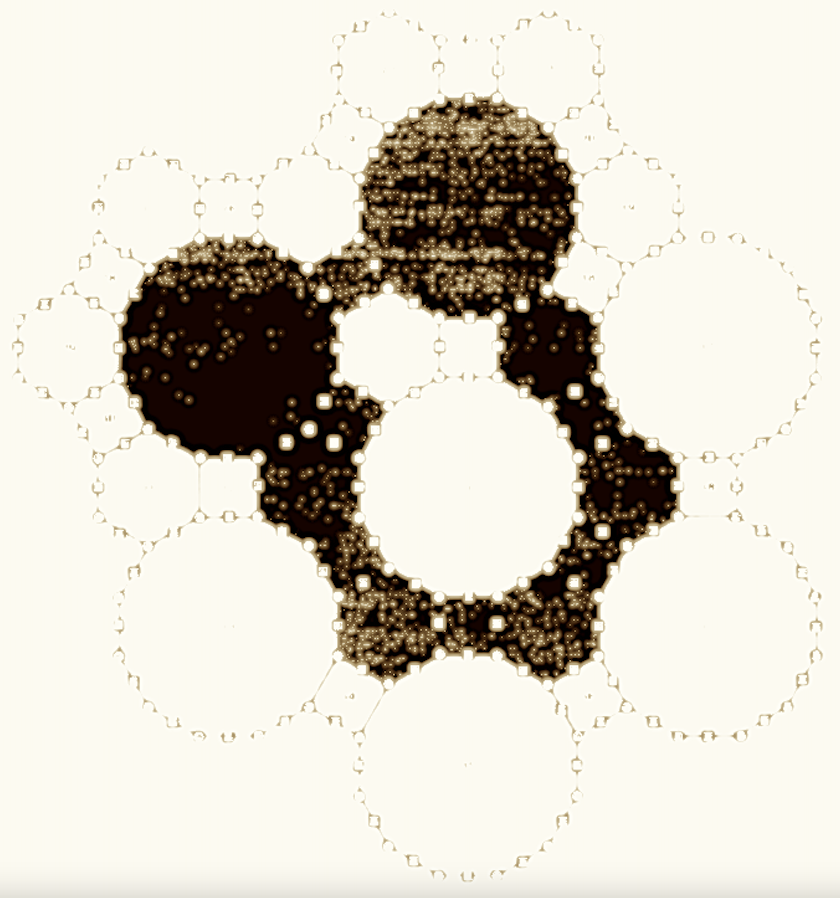I have been fidgeting with some aspects of planar graphs that tickle my fancy. Nothing profound, except in my grandiose imaginings, little more than ramified numerology.

I have been fidgeting with some aspects of planar graphs that tickle my fancy. Nothing profound, except in my grandiose imaginings, little more than ramified numerology.

I think the year was in the early 90’s. A worldwide tour of M. C. Escher prints, all, or almost all of his life’s work, was visiting the Pacific Science Center in Seattle, where I lived. The Baloneys all bought tickets. They seemed expensive, but you got to go twice. I think you had to schedule your visits in advance.
As with most of the Baloneys, I had been familiar with Escher since my high school days. Some of us had even read Hofstadter’s Gödel, Escher, Bach. We had all paged through large-format books of the prints and were conversant with much of his oeuvre. Some of us had hung Escher posters on our walls.
Our first visit was late afternoon on a summer’s day, or maybe late spring. A fine one, whatever the season. Grasshopper had brought an Aerobee™ and some frisbees, as was his wont, and we were flinging them about a lawn. Come to think of it, it must have been spring, as will be obvious. I’m not that great of a thing-tosser, but the other Baloneys were doing it and it isn’t un-fun and I was trying to get into the spirit. Prompted by repeated bits of unsolicited critique about my technique, I was feeling somewhat wrathful and vengeful. In my wrath, I flung the aerobee with rage-high angular-momentum, on a flat, ground-hugging trajectory, ostensibly towards my would-be coach but clumsily at rather the wrong angle. Here’s how I know it was Spring: the cursed object turned out to be aimed at a bed of blooming tulips. We noted the toy’s progress through the flowerbed, not by observing its actual flight but as revealed by the appearance of a shallow, ‘bee-wide rectangular trough, carved by the spinning blade’s premature decapitation of the dazzling petals. Turns out you can put a lot of angular momentum into an aerobee, and tulip stems don’t offer much resistance to spinning knife-edge disks. The craft plowed all the way through the tulip bed, landing in the lawn a ways beyond. I don’t think there was any constabulary patrolling the area, or maybe they simply took pity on us rather than confronting, as we sheepishly retrieved our bloom-slaughtering projectile and decided it was near enough to our scheduled visit time to slink over to the Science Center.
After viewing only the first or maybe the second print we realized the genius of the two-visit conceit. We knew our brains were going to have to digest what we were seeing before returning for more study. Irrespective of the high resolution of the large reproductions, the prints themselves had a presence well beyond the reprographics. The infinite was slightly more infinite, the illusion that much more illusory. There were many works I couldn’t remember having seen, some smaller than the more famous prints, bookplates and the like. My second visit, I believe just with Mrs. Dean-to-be (we were not yet affianced), I thought to spend more of my time on the less familiar works, but I wasn’t as successful as I’d hoped. All of his works simply draw the eye and the mind. Even familiar old foot stompers had unremembered or novel details on second viewing.
I’ve watched some Escher documentaries, and I’m familiar with Roger Penrose’s and his father’s mutual influences with Escher. Geometry fascinates me – spherical, Euclidian, hyperbolic. Ever since I learned about tesseracts, I think in third grade, I have felt that there must be a way to envision geometry, to “see” theorems in an intuitive way that gives the correct answers, so that even if you can’t or don’t know how to write it down, if you did you would see it truly proven.
I doodle. Sometimes I elaborate my doodles, rarely I implementish them. As with Art Project 1, I suspect there will be a series of these, thus the numeration. Here are some ideas from doodles and for doodles.
Doodle Abstract 1. Superlongtermism. A red dwarf star with a full-capture Dyson cloud of techne orbiting. Actually, a just-sub-red-dwarf. Some cloud elements are projecting light nucleus plasma beams into it to keep the fusion going under positive control. Maybe it’s not a cloud, but an actual Dyson sphere, situated to provide a 1 g surface. The sphere captures all the star’s material output, recycling any light nuclei for fusion and retaining the heavier nuclei as a resource. The main material resource is the original stellar system, which has been re-assembled as the sphere, with any remaining atoms stored in a slag planet and its moons, and an ore planet and its moons. Any interstellar material traveling through is captured as a resource. In the far future this could be the motivation for war.
Doodle Abstract 2. Annealed Oulipo. For several co-authors, each author writes each paragraph of the same paper according to the rule. The papers are submitted to a rarity checker, and a ranked choice vote is taken of what the best rare words are. These are then required to be used in the final paper. The rewriting process requires each co-author to be assigned their share of parallel paragraphs, their task being to anneal them together, possibly producing 1 to 3 paragraphs, but including all the concepts and any required rare words. This becomes the rough draft. Then some method of passing the document through the hands of each of the co-authors at least once is used.
Doodle Abstract 3. Finite Tilings of Spherical Surfaces. The Platonic solids as avatars of the regular tilings, for the surface of a sphere rather than the infinite Euclidean plane. Definitely periodic. OTOH, you can randomly populate the surface of a sphere with vertices, and then fiddle with them until they are very nearly equidistant. With 4, 6, 8, 12, 20 vertices this will (probably provably) evolve to the Platonic solid vertices. With other numbers would you get the equivalents of the uniform tilings etc.? With yet other numbers could you set things up so that there are two different classes of equidistant points, either at the same distance even though there are two classes, or two different distances, etc. Or perhaps rational number distances only, optimizing for standard deviation and maximum deviation somehow. Would you get situations where each distance and therefore edge and therefore tile is different, or would you have subsets of equal lengths? An aperiodic tiling of an infinite number of tiles whose geometries vary according to some rule.
Doodle Abstract 4. Peer Reviewed Paragraphs. Citizen (and Establishment) microknowledge. They would have the equivalent of DOIs, and AIs would be constantly searching the available literature for paragraphs and sentences thereof easily transformable to the DOI version. If every artist is a thief, every sentence is a plagiarism. This is a mechanism to organize the data and the implications so that the wealth can be spread around justly.
Doodle Abstract 5. AI Old Pictures. Scan a bunch of decorative alphabet letters and engravings and such from old books. Use these as your training data for prompt-driven image derivations. Analyze them down to the splines, so you can manually or algorithmically optimize and tweak them.
I have numbered this post, as I imagine I will do more of these. I was actually going to schedule two normal posts, which I will get around to, but I have a new scanner, pottered around with it, and thought to do a Thing or two. This post comprises this paragraph and two Things.
